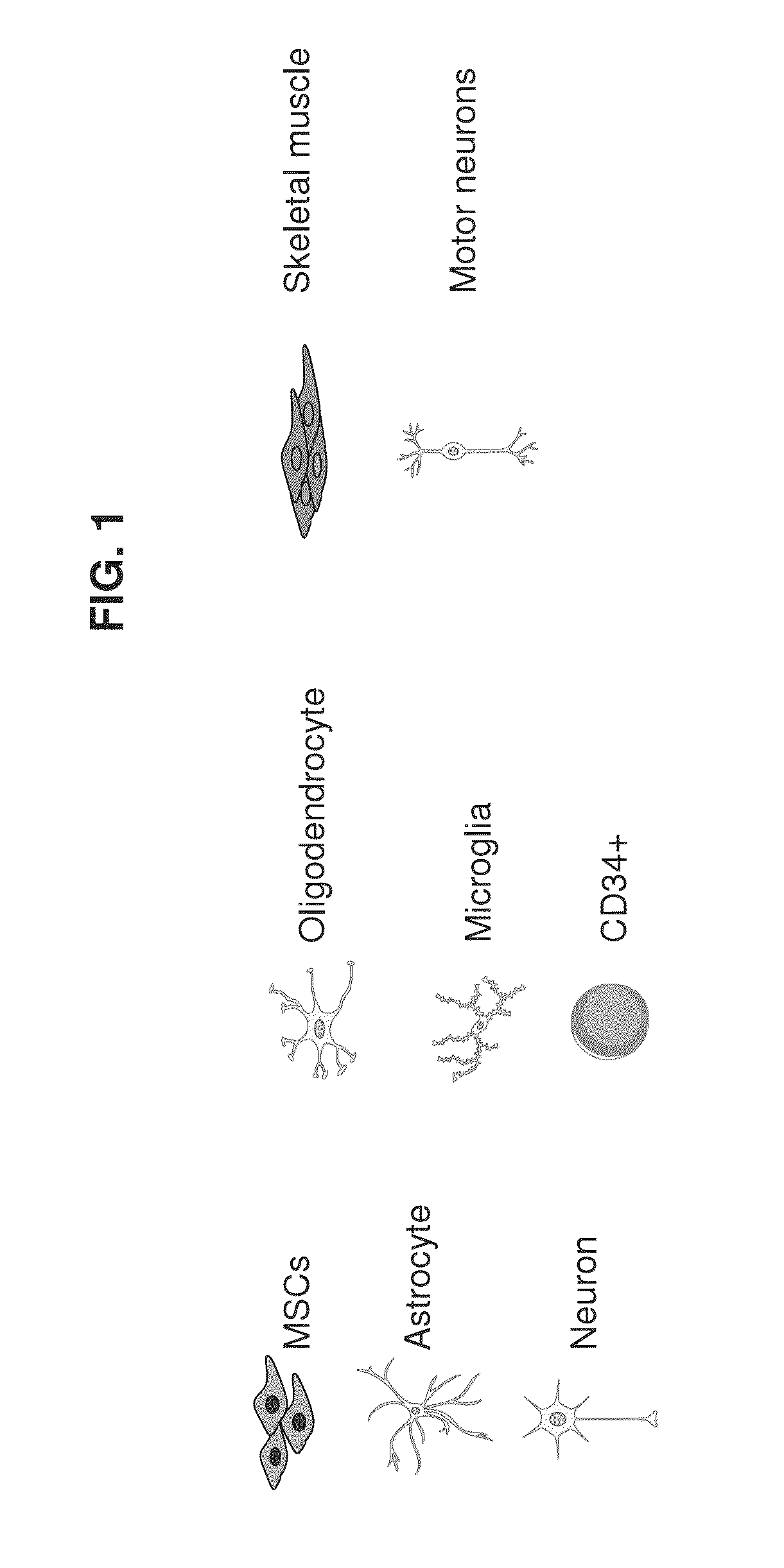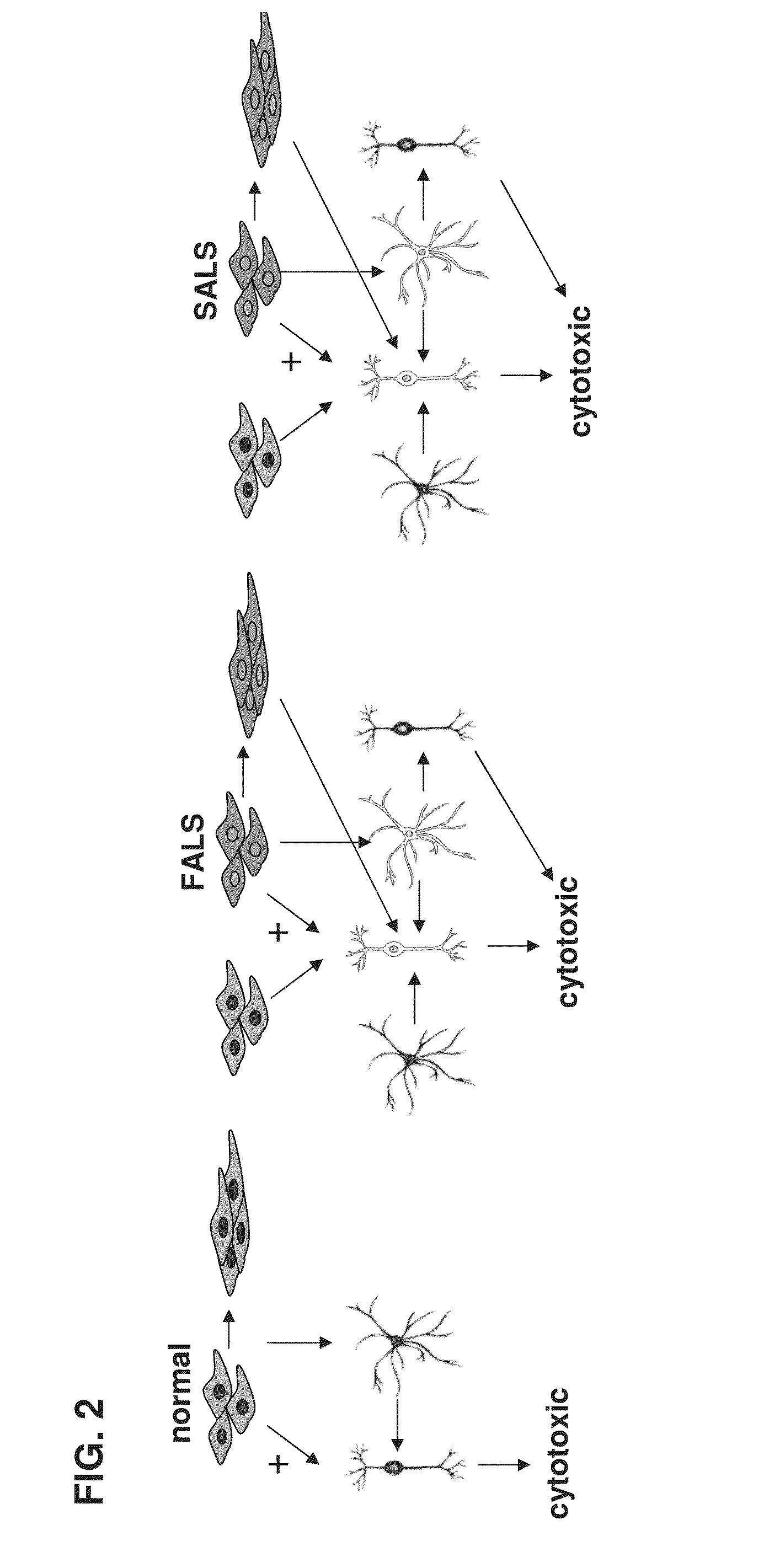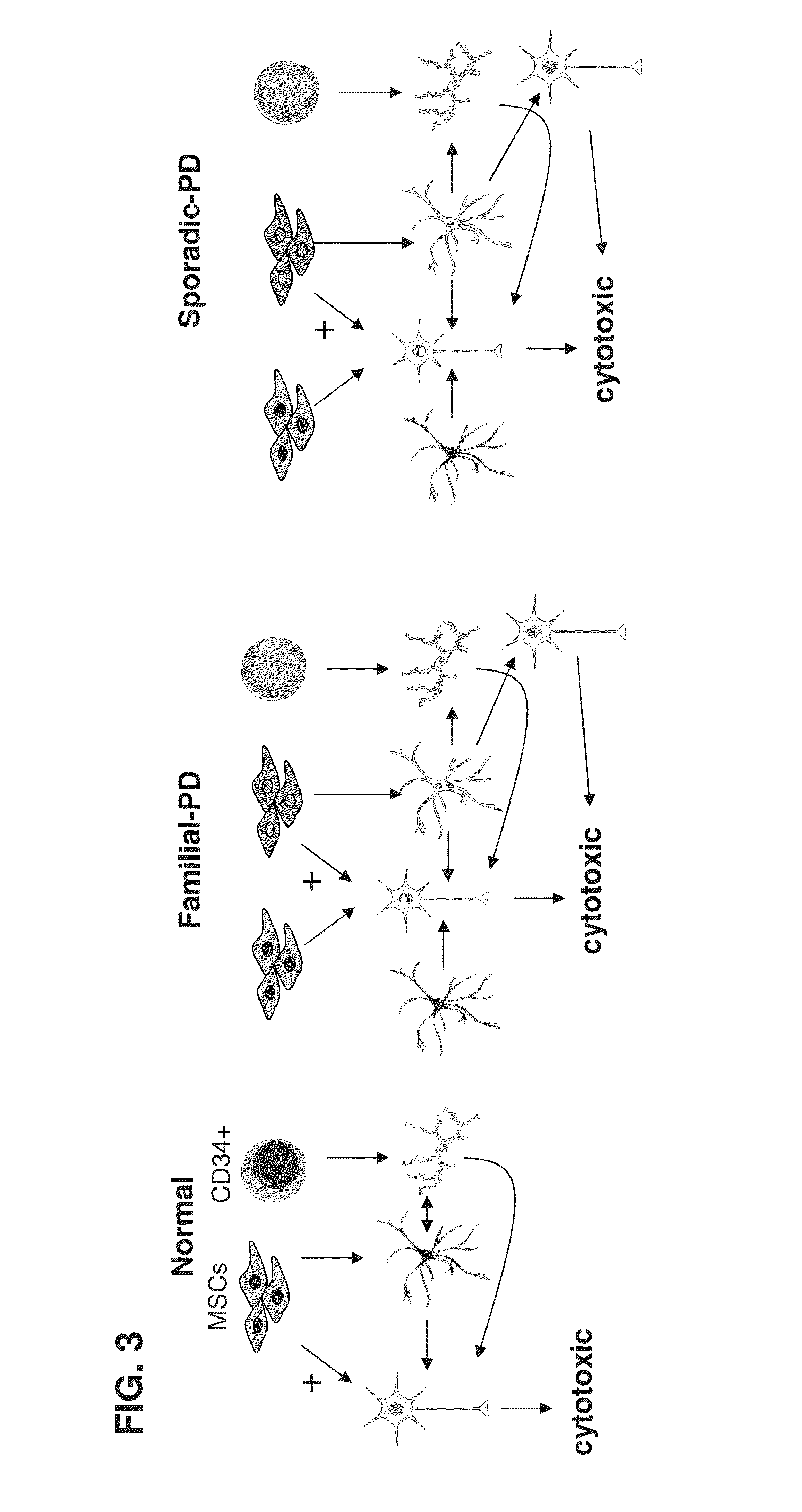Mesenchymal stem cells for in vitro modeling and cell-based therapy of human diseases and banks thereof
a technology of human diseases and stem cells, applied in the field of human disease in vitro modeling and human disease banks, can solve the problems of many associated limitations, impede the ability, and most primary cells are difficult to access, and have a finite lifespan in cultur
- Summary
- Abstract
- Description
- Claims
- Application Information
AI Technical Summary
Benefits of technology
Problems solved by technology
Method used
Image
Examples
example 1
[0377]Amyotrophic lateral sclerosis (ALS) is a fatal neurodegenerative disease of unknown cause affecting the upper and lower motor neurons of patients. Approximately 5,600 people in the U.S. are diagnosed with ALS each year. The incidence of ALS is two per 100,000 people, and it is estimated that as many as 30,000 Americans may have the disease at any given time. 80% of patients die within five years following diagnosis, where normally death is due to respiratory failure. To this day, there is no effective treatment for ALS; the only drug currently approved by the FDA is a NMDA receptor antagonist (riluzole) that increases the rate of survival by 6 months. It is imperative to find new drugs for this disease and try to better understand the causes and mechanism of action, which are still largely unknown.
[0378]The three cell types that are involved in the pathogenesis of ALS are motor neurons, skeletal muscle cells and astrocytes. These cells are involved...
example 2
Parkinson's Disease
[0435]Parkinson's disease (PD) is a progressive neurodegenerative disease that is characterized by rigidity, bradykinesia and resting tremor. The pathological hallmarks of this disease are the selective loss of dopaminergic neurons in the substantia nigra pars compacta (SNc) in the midbrain. Most of the cases of PD occur sporadically with yet unknown causes and pathogenesis. Potential mechanisms include mitochondrial dysfunction, oxidative stress, endoplasmic reticulum stress, failure of the ubiquitin-proteasome system, some environmental factors, and genetic predisposition.
[0436]In addition to the sporadic form of PD, there is also a familial form which is observed in about 5% of all PD patients. Although most of the PD cases are sporadic, multiple genetic causes are known including dominant mutations in the alpha-synuclein gene; alanine 30 to proline (A30P) and alanine 53 to threonine (A53T), or increased synthesis of the normal a-synuclein. Moreover, α-synuclei...
example 3
Alzheimer's Disease
[0446]Alzheimer's disease (AD) is a common chronic neurodegenerative disease and is the most common cause of dementia. The two hallmarks of the disease are senile plaques, which are mainly composed of extracellular deposits of amyloid β and neurofibrillary tangles, which consist of intracellular aggregates of aberrantly phosphorylated tau protein.
[0447]The existence of the senile plaques is also associated with an inflammatory response which is considered to play a prominent and early role in AD.
[0448]The majority of Alzheimer's disease cases are sporadic, however there are rare cases of dominantly inherited familial forms of Alzheimer's disease that have mutations or a duplication of APP (encodes the amyloid-13 precursor protein), or mutations in the presenilin genes (which encode proteolytic enzymes that cleave APP into amyloid-β). In both types of AD, additional cell types such as astrocytes and microglia have been implicated in the pathogenesis of the disease....
PUM
| Property | Measurement | Unit |
|---|---|---|
| volumes | aaaaa | aaaaa |
| pH | aaaaa | aaaaa |
| molecular weights | aaaaa | aaaaa |
Abstract
Description
Claims
Application Information
 Login to View More
Login to View More - R&D
- Intellectual Property
- Life Sciences
- Materials
- Tech Scout
- Unparalleled Data Quality
- Higher Quality Content
- 60% Fewer Hallucinations
Browse by: Latest US Patents, China's latest patents, Technical Efficacy Thesaurus, Application Domain, Technology Topic, Popular Technical Reports.
© 2025 PatSnap. All rights reserved.Legal|Privacy policy|Modern Slavery Act Transparency Statement|Sitemap|About US| Contact US: help@patsnap.com



